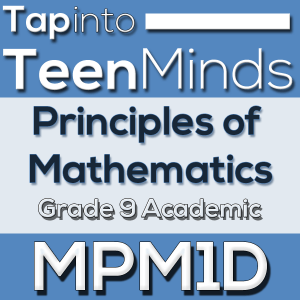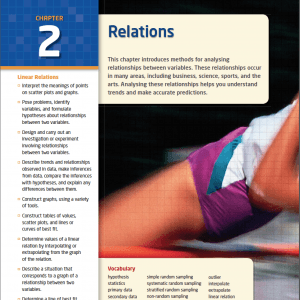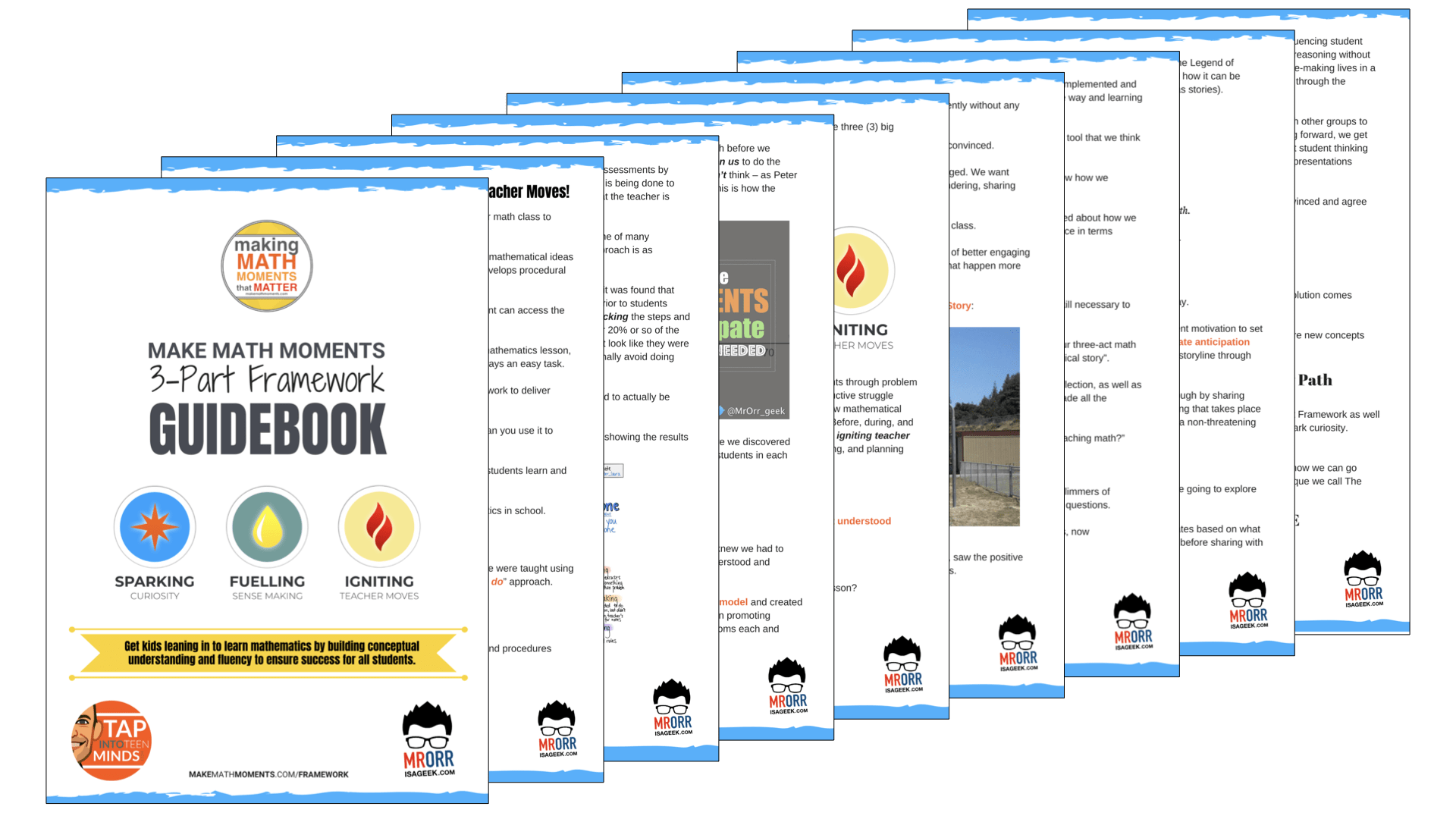Many of these resources were created and/or modified by Dave Bracken with further additions and modifications by Kyle Pearce.
Click to view MPM1D Strands and Overall Expectations.

This link will allow you indicate which question you would like to look at from the homework.Be sure to take a minute to think about which question gave you the most trouble.
MPM1D Digital Textbook
McGraw-Hill Ryerson: Principles of Mathematics, 9
While we don’t use the textbook for much more than a question bank, you can access the McGraw-Hill Ryerson Textbook: Principles of Mathematics, 9 Electronic Textbook in PDF Form. Note that the textbook is password protected for only my students due to copyright law.

Download Adobe Reader to view files.
3 Act Math Tasks
MPM1D Grade 9 Academic Real World Math Problems
Access 3 Act Math Tasks related to the MPM1D Grade 9 Academic Math Course.

MPM1D Unit 1 (Unit 2 in Textbook) – Relations
Sec. 1.1 (2.3 in Text) – Use Scatter Plots to Analyse Data
Chapter 5 Title Page & Get Ready Section (Pages 234 to 237)
Blank Note Handout 1, Handout 2
Note Solutions 1, Solutions 2
Corresponding Textbook Pages: 56 to 67
Blank Note Handout
Note Solutions
Corresponding Textbook Pages: 68 to 76
Blank Note Handout
Note Solutions
Corresponding Textbook Pages 77 to 87
Blank Note Handout
Note Solutions
Corresponding Textbook Pages 88 to 94
Blank Note Handout Part 1, Handout Part 2
Handout 1 Solutions, Handout 2 Solutions
Corresponding Textbook Pages 88 to 94
Blank Note Handout v1
Blank Note Handout v2
Note Solutions v1
Note Solutions v2
Corresponding Textbook Pages 95 to 99
SMART Notebook File
Blank Note Handout
Note Solutions
Corresponding Textbook Pages 104 to 109
Blank Note Handout
Note Solutions
Corresponding Textbook Pages 110 to 118
Blank Note Handout
Note Solutions
Corresponding Textbook Pages 119 to 129
Blank Note Handout
Note Solutions
Corresponding Textbook Pages 119 to 129
Blank Note Handout
Note Solutions
Corresponding Textbook Pages 134 to 135
Blank Note Handout
Note Solutions
Corresponding Textbook Pages 144 to 153
Blank Note Handout
Note Solutions
Corresponding Textbook Pages 154 to 159
Blank Note Handout
Note Solutions
SMART Notebook File
Corresponding Textbook Pages 160 to 173
Blank Note Handout
Blank Note Handout
Note Solutions
Corresponding Textbook Pages 174 to 177
Blank Note Handout
Note Solutions
Blank Note Handout
Note Solutions
Corresponding Textbook Pages 186 to 195
Day 1 Blank Note Handout
Day 1 Note Solutions
Day 2 Blank Note Handout
Day 2 Note Solutions
Corresponding Textbook Pages 196 to 203
Sec. 3.3 (4.3 in Text) – Solve Equations Involving Fractions
Day 1 Blank Note Handout
Day 1 Note Solutions
Day 2 Blank Note Handout
Day 2 Note Solutions
Corresponding Textbook Pages 204 to 210
Day 1 Blank Note Handout
Day 1 Note Solutions
Day 2 Blank Note Handout
Day 2 Note Solutions
Corresponding Textbook Pages 211 to 219
Blank Note Handout
Note Solutions
Corresponding Textbook Pages 220 to 229
Blank Note Handout
Note Solutions
Corresponding Textbook Pages 230 to 233
Blank Note Handout – OLD
Note Solutions – OLD
NEW Blank Note Handout – Direct AND Partial Variation
New Note Solutions
Corresponding Textbook Pages 238 to 245
Blank Note Handout – OLD
Note Solutions – OLD
NEW Blank Note Handout – Direct AND Partial Variation
New Note Solutions
Corresponding Textbook Pages 246 to 253
Blank Note Handout Part 1
Note Solutions Part 1
Blank Note Handout Part 2
Note Solutions Part 2
Corresponding Textbook Pages 254 to 263
Blank Note Handout Part 1
Note Solutions Part 1
Blank Note Handout Part 2
Note Solutions Part 2
Corresponding Textbook Pages 264 to 271
Blank Note Handout
Note Solutions
Corresponding Textbook Pages 272 to 278
Blank Note Handout
Note Solutions
Corresponding Textbook Pages 279 to 287
Blank Note Handout Part 1
Note Solutions Part 1
Blank Note Handout Part 2
Corresponding Textbook Pages 279 to 287
Blank Note Handout
Note Solutions
Corresponding Textbook Pages 296 to 307
Blank Note Handout
Note Solutions
Corresponding Textbook Pages 308 to 314
Blank Note Handout
Note Solutions
Corresponding Textbook Pages 315 to 325
Blank Note Handout
Note Solutions
Corresponding Textbook Pages 326 to 329
Blank Note Handout
Note Solutions
Corresponding Textbook Pages 330 to 337
Blank Note Handout
Note Solutions
Corresponding Textbook Pages 338 to 343
Blank Note Handout
Note Solutions
Corresponding Textbook Pages 344 to 351
Sec. 5.8 (6.8 in Text) – Unit 6 Review – Analyse Linear Relations
Blank Note Handout
Note Solutions
Corresponding Textbook Pages 352 to 355
Blank Note Handout
Note Solutions
Corresponding Textbook Pages 364 to 373
Blank Note Handout
Note Solutions
Corresponding Textbook Pages 374 to 383
Blank Note Handout
Note Solutions
Corresponding Textbook Pages 384 to 393
Blank Note Handout
Note Solutions
Corresponding Textbook Pages 394 to 400
Blank Note Handout
Note Solutions
Corresponding Textbook Pages 401 to 407
Blank Note Handout
Note Solutions
Corresponding Textbook Pages 408 to 411
Blank Note Handout
Note Solutions
Corresponding Textbook Pages 418 to 425
Blank Note Handout
Note Solutions
Corresponding Textbook Pages 426 to 435
Blank Note Handout
Note Solutions
Corresponding Textbook Pages 436 to 443
Blank Note Handout
Note Solutions
Corresponding Textbook Pages 444 to 450
Blank Note Handout
Note Solutions
Corresponding Textbook Pages 451 to 456
Corresponding Textbook Pages 457 to 461
Corresponding Textbook Pages 457 to 461
Corresponding Textbook Pages 470 to 473
Blank Note Handout
Note Solutions
Corresponding Textbook Pages 478 to 483
Blank Note Handout
Note Solutions
Corresponding Textbook Pages 484 to 490
Blank Note Handout
Note Solutions
Corresponding Textbook Pages 491 to 497
Corresponding Textbook Pages 498 to 503
Corresponding Textbook Pages 504 to 509
Corresponding Textbook Pages 510 to 515
Corresponding Textbook Pages 516 to 519
- NA1 – Operating with Exponents
- AG1 – Investigating the Relationship Between the Equation of a Relation and the Shape of Its Graph
- AG2 – Investigating the Properties of Slope
- AG3 – Using the Properties of Linear Relations to Solve Problems
- MG1 – Investigating the Optimal Values of Measurements
EACH LESSON CONSISTS OF:
In multi-day units of study, Math Talks are crafted to help build on the thinking from the previous day and build towards the next step in the developmental progression of the concept(s) we are exploring.
Each Math Talk is constructed as a string of related problems that build with intentionality to emerge specific big ideas, strategies, and mathematical models.
Each Teacher Guide consists of:
- Intentionality of the lesson;
- A step-by-step walk through of each phase of the lesson;
- Visuals, animations, and videos unpacking big ideas, strategies, and models we intend to emerge during the lesson;
- Sample student approaches to assist in anticipating what your students might do;
- Resources and downloads including Keynote, Powerpoint, Media Files, and Teacher Guide printable PDF; and,
- Much more!
Students will often Notice and Wonder before making an estimate to draw them in and invest in the problem.
A great example of this is one of our more recent units called Piggy Bank.
These prompts are given each lesson with the following conditions:
- No calculators are to be used; and,
- Students are to focus on how they can convince their math community that their solution is valid.
Students are left to engage in a productive struggle as the facilitator circulates to observe and engage in conversation as a means of assessing formatively.
The facilitator is instructed through the Teacher Guide on what specific strategies and models could be used to make connections and consolidate the learning from the 3 act math lesson.
Often times, animations and walk through videos are provided in the Teacher Guide to assist with planning and delivering the consolidation.
A review image, video, or animation is provided as a conclusion to the task from the problem based lesson.
While this might feel like a natural ending to the context students have been exploring, it is just the beginning as we look to leverage this context via extensions and additional lessons to dig deeper.
At the end of each lesson, consolidation prompts and/or extensions are crafted for students to purposefully practice and demonstrate their current understanding.
Facilitators are encouraged to collect these consolidation prompts as a means to engage in the assessment process and inform next moves for instruction.
At the end of each lesson, consolidation prompts and/or extensions are crafted for students to purposefully practice and demonstrate their current understanding.
Facilitators are encouraged to collect these consolidation prompts as a means to engage in the assessment process and inform next moves for instruction.
In multi-day units of study, Math Talks are crafted to help build on the thinking from the previous day and build towards the next step in the developmental progression of the concept(s) we are exploring.
Each Math Talk is constructed as a string of related problems that build with intentionality to emerge specific big ideas, strategies, and mathematical models.

SPARK
Curiosity

FUEL
Sense Making

IGNITE
Your Teacher Moves
MAKE MATH MOMENTS WITH THE 3-PART FRAMEWORK

The Make Math Moments core lesson design should be your go-to math lesson planning framework to spark curiosity, fuel student sense making, and ignite your teacher moves.
Download the Digital Guidebook now!
TRANSFORM YOUR ASSESSMENT PROCESS TO:
ASSESS FOR GROWTH

Our latest math educator PD course, teaches how we can transform our assessment and evaluation process from one that promotes assessment to label to assesses for learning through problem based math lessons. Let’s Grade for Growth!
Module 1 is NOW OPEN ACCESS for you to enjoy, but for a limited time only.
